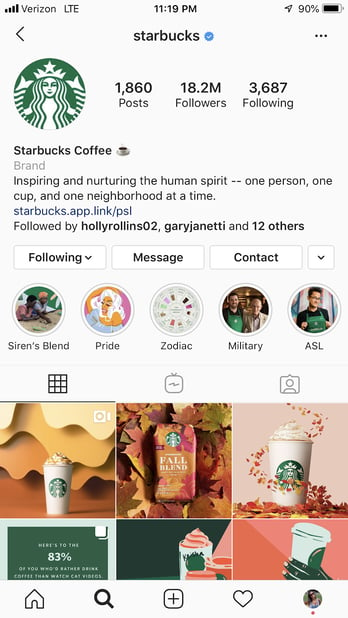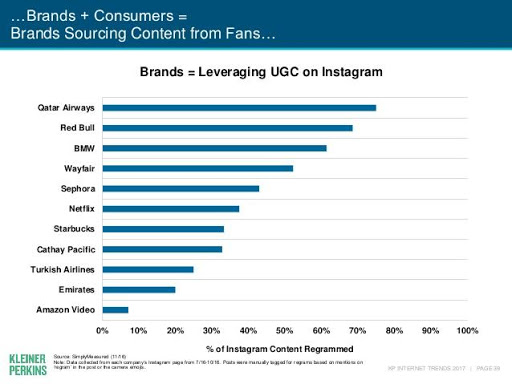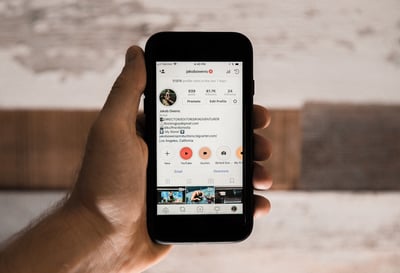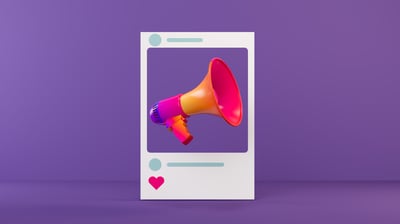
Instagram is a powerful platform for businesses.
There are more than 25 million Instagram business profiles active, and 2 million advertisers on the platform according to internal data. The Instagram audience is also incredibly engaged; 60 percent of users discover new products using Instagram, and over 200 million visit at least one business profile per day.
As the platform reports in its blog: “As 800 million use Instagram each month to discover and follow their passions, more and more people are using it to connect with businesses they love."
Forbes supported this claim, declaring Instagram as “the new home for [brands] seeking an impact on social media.”
Instagram marketing can also work for your business—if you use it correctly. An optimized social media marketing strategy can help you build a cohesive brand, gauge your target audience, and increase leads and revenue.
Use these 10 tips to get the most value out of your Instagram presence, and, in turn, boost your overall business practices.
Unlike other feature-heavy social networks (like Instagram’s parent company, Facebook) the mobile-first platform has a relatively simple profile layout. You can use your profile as the first step to a streamlined brand presence on Instagram. Make sure you include the following foundational elements to make your profile the best it can be:
| TIP: Make sure you use the proper Instagram profile picture size for your business profile. |
Starbucks’ profile is a perfect example of a company that uses its limited profile space well.
 Image source: Starbucks Instagram
Image source: Starbucks Instagram
A good marketer knows the right tools allow you to work smarter, not harder. While there are countless third-party resources that can help you make the most of your Instagram presence, here are a few valuable options that offer freemium subscriptions to help you level up your social media game:
|
TIP: Use social media management software to schedule your Instagram posts in advance. |
| TIP: Explore all of your options—check out the best free photo editing software. |
Brand guidelines help you ensure your company’s design is standard across all content. Because Instagram is a visual-forward platform, it’s important to establish a guide to ensure on-brand graphics, feel, and aesthetic. Brand consistency keeps your messaging, offerings, design, and perspective in line with your company’s overall goals. Effective branding helps build awareness and develop trust and loyalty with your customers or clients.
For smaller businesses that don’t have a brand guide, using Instagram can be a foray into establishing brand marketing standards they can then use throughout their marketing assets. The deeper visual nature of the platform is pushing many non-traditionally design-forward businesses to reconsider their branding approach for the better.
A well-developed content calendar (especially for Instagram) helps you with visualization, organization, consistency, and reporting. It can be as simple as using a social media scheduler or a shared Google spreadsheet. Your content calendar guides your social media strategy and content sharing (and can also translate to your other content and marketing efforts).
While you should create an annual calendar to guide overall strategy, it’s best practice to revisit quarterly so you don’t miss important dates or holidays. Additionally, social media activity coordinates with other timely topics, such as current events and changes in the industry, and if necessary, you can add new, relevant information to your calendar when you revisit.
Many B2C brands, for example, adjust their calendars to match buying seasons. The HGTV-grown lifestyle empire Magnolia offers a masterclass example of a seasonally-inspired calendar. Looking at their Instagram grid, you notice how their posts reflect the summer (left) or autumn (right) season.
 Image source: Magnolia Instagram
Image source: Magnolia Instagram
As an added bonus, a calendar act as a repository of content you’ve shared over time. Use it to analyze and assess what is and isn’t working. Again, you want to work smarter, not harder, and maximize your time. Consider also using your calendar to track your KPIs and metrics, helping guide your decision making and future strategy.
|
Social media monitoring software makes tracking metrics much easier. Explore your options on G2. |
The Instagram algorithm changes as often as the seasons. While this can seem burdensome to marketers and business owners, it forces them to stay up to date with the latest marketing best practices. An understanding of the algorithm can lead to a better understanding of the shifting nature of your industry in other areas.
If you take even an afternoon every quarter to explore new algorithm and social media updates using online resources, you can stay ahead of the curve. For example, this Social Media Today report offers actionable data on posting frequency versus engagement. To get started, try this guide on how to work with algorithms to maximize performance.
Everything you do to run your business should be strategic. Many business owners and managers, however, are reactive and tend to run things as they happen. Sprout Social confirms that nearly half of all social marketers say their greatest challenge is developing a strategy that supports overall business goals.
Crafting, fine-tuning, and updating an optimized Instagram strategy is an opportunity to prioritize the overarching objectives and goals of your business.
| Tip: Want your business to look legit? Here’s our guide to how to get verified on Instagram. |
You can reach a large and engaged audience through posting to Instagram’s feed or stories. It’s the perfect place to test out new content topics, themes, and angles to gauge interest.
For instance, you can use the poll feature on Instagram stories to directly ask your audience about its preferences. It’s free, effective A/B testing that you can use to ideate content for your brand’s other marketing efforts, such as your blog or customer support content.
|
Related: Check out these 10 unique ways to amp up your content marketing across all social channels! |
User-generated content (UGC) is content your audience posts about your brand that you can re-share to your feed. For Instagram, (and all parts of your business) UGC is a gold mine. Big brands know this and take advantage of it—see for yourself in the graph below.

Source: Kleiner Perkins
To utilize UGC, first look for images your audience posts about your brand, then repost them. Make sure to use a reposting app to give proper credit. You can also create direct campaigns or contests, asking your audience to post pictures using your products or services. This lends authenticity to your brand that social media users crave, and 86% of consumers agree that authenticity is important when deciding what brands they like and support.
This is especially true in today’s ad-heavy digital environment, where nearly 42% of consumers think ads are too aggressive and 18.6% even find them creepy. UGC is like an organic ad for your business from a trusted source, so it’s unlikely to come off as aggressive or creepy.
Instagram offers a unique space to interact and engage with your audience on a personal level. You can have conversations with your customers or clients via direct messages, replies, comments on Instagram stories, and reposting. Think of it as low-cost, low-effort, and low-stress market research where you can learn more about your target demographics.
Boosting engagement also allows you to strengthen relationships with your target audience, customers, and clients—which is essential to building a well-trusted brand.
Using Instagram opens you up to countless potential new leads, as 200 million Instagrammers actively visit the profile of a business every day. Two-thirds of these visits are from people who aren’t yet following that business. There’s great potential for engagement with your brand on Instagram, but don’t forget that your ultimate goal should still be conversions.
Twenty-eight percent of marketers say social selling is one of their top priorities for 2019, but only 16% admit that incorporating social media into their sales process is one of their biggest challenges. Instagram can be used to reach a new audience and help your business strategy in a multitude of other ways, but don’t forget to close the loop.
For e-commerce businesses, that might mean adding shoppable tags to posts and stories—a recent, highly valuable update to the platform. Whether you are B2B or B2C, there are plenty of ways to get Instagram followers into your funnel.
Is your instagram profile good to go? Great, now get going on creating your Facebook business page.
Holly Rollins is the president of 10xdigital, a digital marketing agency that specializes in marketing strategy, SEO, pay-per-click advertising, PR/backlinks and more. She has more than 20 years of experience in marketing, public relations, digital marketing, and content marketing. She has been named a Top Global Content Marketer by the Content Marketing Institute (2013-2018) and when she is not working, she enjoys traveling, painting, and her two Greyhound pups.
Several years ago, no one could have predicted that Instagram would become the second most...
 by Val Razo
by Val Razo
If you’re having trouble getting started with lead nurturing on Instagram, you’re not alone.
 by Rafaella Aguiar
by Rafaella Aguiar
With its wide global advertising audience, it's no wonder that Instagram has great potential...
 by Val Razo
by Val Razo
Several years ago, no one could have predicted that Instagram would become the second most...
 by Val Razo
by Val Razo
If you’re having trouble getting started with lead nurturing on Instagram, you’re not alone.
 by Rafaella Aguiar
by Rafaella Aguiar


